VET APPROVED

The information is current and up-to-date in accordance with the latest veterinarian research.
Learn more »Some cats love to cuddle, but others may not be as interested in being smothered with human-initiated snuggles. Other cats who are more independent or fearful may prefer to live without the indignities of uninvited human affection, particularly in the form of hugs and kisses.
If your cat was firmly opposed to curling up next to you on the couch but has suddenly decided your lap is the absolute best place to hang out, you might wonder what’s going on. Read on for 10 possible reasons why your cat could be laying on you all of a sudden.

The 10 Reasons Your Cat is Laying on You All of a Sudden
1. Affection
Cats love to cuddle with their favorite people; they only take naps or lie on top of people they know and like. Chances are that your cat is lying on you because they enjoy being around you! This is particularly true if your cat purrs and gives you sweet headbutts after taking over your lap.
If your cat has just started hanging out on your tummy and you recently adopted them, it’s probably a sign that you’ve won your new companion’s heart. Cats form deep bonds of affection with the people who consistently shower them with love. Chances are that your cat has simply decided to make you their person officially!
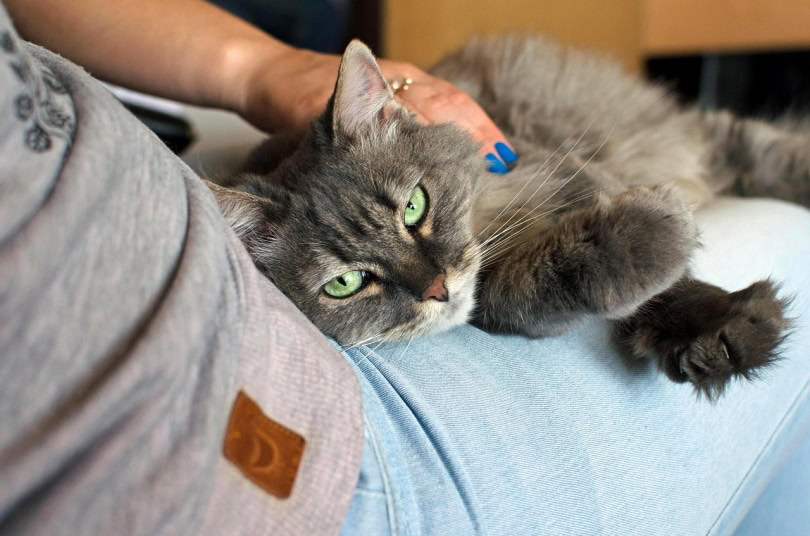
2. Trust
While cats have acquired an unfair reputation for being standoffish, most people who’ve lived with one would happily disagree. Cats are remarkably open and affectionate towards people they trust. Most dogs approach new people with openness, curiosity, and a certain amount of acceptance.
Cats engage in no such nonsense, only bothering to interact with individuals they have determined worthy of their trust, which is a process that takes time. A feline that trusts a human will often roll over and allow them to pet their belly or take naps next to them. Cats are vulnerable when sleeping, and it’s a huge compliment if one feels secure enough with you to nap on your lap.
3. Warmth
Cats love warmth. They’re descended from desert-dwelling wild cats, and as a result, most kitties like it warm! Healthy adult cats’ body temperatures hover somewhere between 100 and 102.5°F. But cats are most comfortable when the air around them is between 77 and 86°F.
During the winter, many North American homes have lower ambient temperatures; 68°F is the most recommended thermostat setting. Cats will cuddle up next to you when they want to get cozy. Pay attention to your cat and watch out for signs like shivering that may indicate they’re uncomfortably cold. Old or very young, skinny, and sick cats get chilly surprisingly quickly.
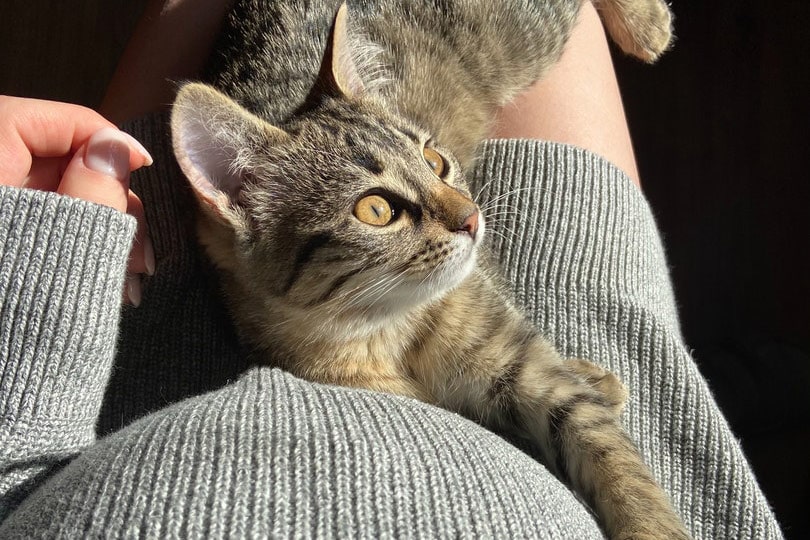
4. Sickness or Pain
If your cat isn’t feeling well, they may be more inclined to jump into your lap. Cats often crave warmth when not feeling their best. Consistently snuggling and seeking comfort could signify your cat isn’t feeling terribly well. While some cats isolate themselves, hide, and insist on being alone when feeling under the weather, others need constant reassurance and attention.
Other common signs of illness in cats include weight loss, lethargy, or more specific signs depending on the affected organ system, such as gastrointestinal issues, increased drinking or peeing, limping or stiffness, signs of pain, and others. Get in touch with a veterinarian as soon as possible if any of the above signs accompany your pet’s out-of-character behavior.
5. Concern
Cats are highly perceptive creatures and may be able to pick up on human emotions based on our body language, auditory and visual cues, and others.1 If you’re deeply bonded to a cat, they can easily pick up on subtle clues that indicate that you’re not feeling well. And there’s a good chance they can also smell changes in your body chemistry. If you’ve had an upset stomach or a headache for a few days or are home recovering from surgery, don’t be surprised if your cat makes your lap their new favorite place to nap.
Some cats often spend more time around people they love who aren’t feeling well, while others may be entirely neutral or even distance themselves from you.
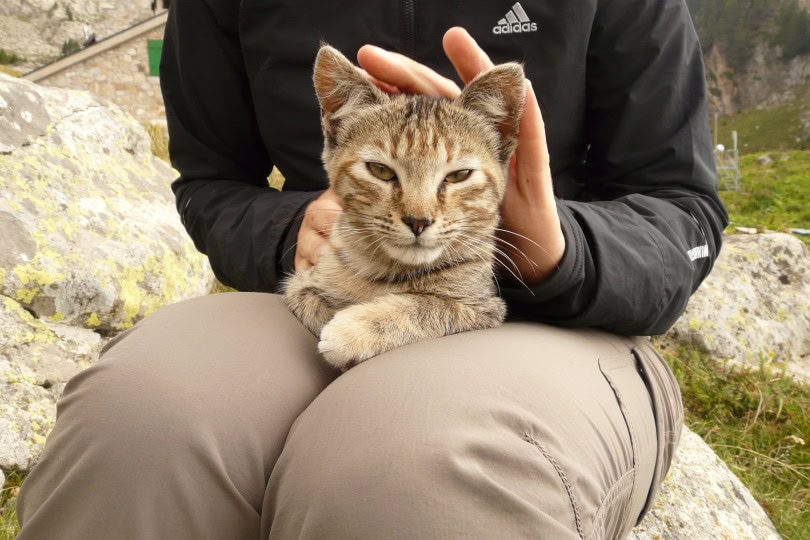
6. Grief
If your cat recently lost a human, canine, or feline companion they were very close with and now can’t get enough of your lap, there’s a chance they’re experiencing grief.2 Cats grieve in various ways—some withdraw and begin to spend more time alone, while others turn to their human family members for support.
Some cats that lose a companion become more clingy, requiring more of their owner’s attention. Grieving cats may eat less or stop eating entirely, start meowing more, appear as if they’re looking for their companion, losing interest in playing, while some may develop sleep problems.
Make sure to get your cat checked out by the vet as these signs may also be a consequence of an underlying illness that may be easily mistaken for grief. If your vet gives your kitty a clean bill of health, ensure to provide them with plenty of reassurance and keep things as consistent as possible to reduce your cat’s stress level.
7. Aging
Cats, like humans, follow a logical progression in life. Kittens tend to sleep a ton, after a good deal of playtime, but adult and middle-aged cats hit a groove and usually spend far less time snoozing than their younger counterparts. Senior cats may start to slow down and sleep more, which are behaviors that become more pronounced as they age but may also be a sign of illness.
If you have a mature (7–10 years old) or a senior cat (over 11), it’s best to get them checked out by the vet every 6–12 months, to ensure there are no underlying health issues that may reduce their quality of life or cause them pain and discomfort.
Feline cognitive dysfunction, similar to human dementia, can also cause changes in your cat’s behavior, usually resulting in excessive sleepiness, reduced interest in playing, toileting outside of the litter box, confusion, and wandering off.
However, if your cat is healthy after being examined by the vet, there’s a good chance this more affectionate behavior is a normal part of aging. As long as your cat is otherwise well, there’s probably nothing to worry about.
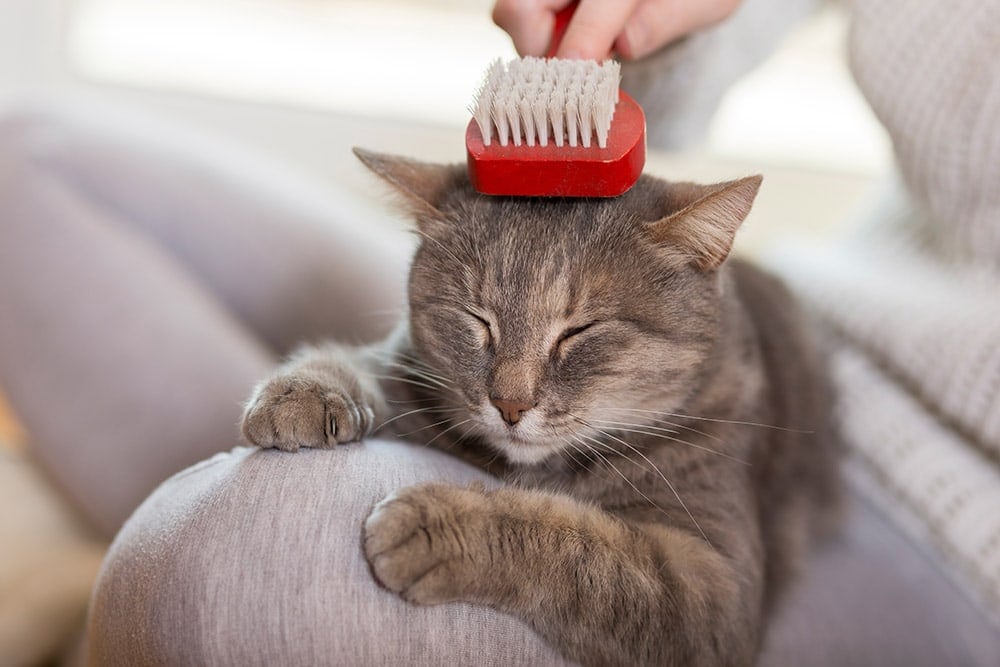
8. Anxiety and Stress
Some cats become clingy when they’re feeling stressed or unsure, while others choose to hide and become withdrawn. This is generally the case when their routine changes significantly or suddenly, not allowing them to adapt to their new circumstances.
This can be the arrival of a new pet or a baby in the house, a new neighborhood cat, loud noise, guests, or other stressors such as home renovations or moving to a new home. In some cases, cats can develop anxiety anticipating a stressful or unpleasant event, as they see them as a potential threat, regardless if it becomes one or not.
Cats suffering from anxiety may turn to their human companions for comfort. If a cat has suddenly been exposed to a stressful environment, they may become more affectionate and seek you out more frequently, while others will choose to hide and may even eat less than normal. Observe your cat’s body language and try to anticipate stressful events well ahead of time, in order to be able to reduce it and ensure your kitty has a safe place to hide.
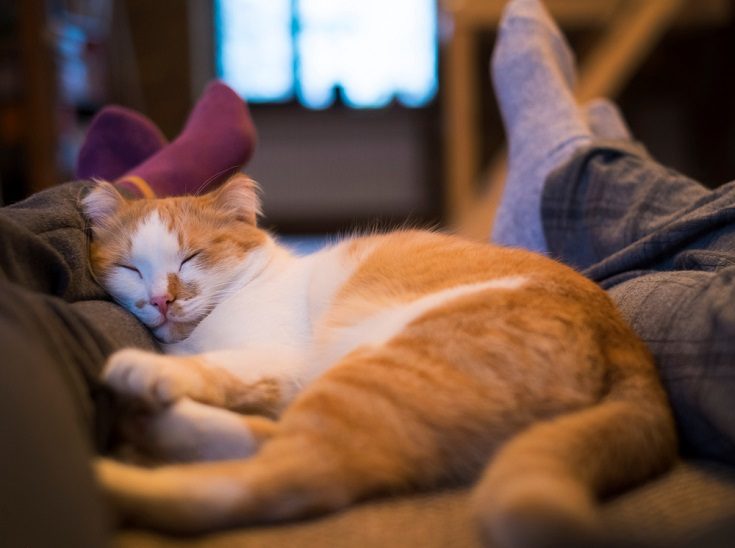
9. Marking
Cats have amazing noses. They can smell up to 14 times better than humans and use scent as a quick and easy way to identify family members. Marking is a necessary form of feline communication as it relies on pheromones and smells packed with important biological and social information. Most people know that cats, male cats, in particular, tend to mark their territory with urine.
But cats are constantly leaving less obvious scent signals. Cats have scent glands on the pads of their feet, around their cheeks, and under their chins. When a cat gives you a headbutt or kneads your lap, they’re showing you love and leaving their scent behind, which provides comfort and lets other felines know you’re taken.
10. Attention Seeking Behavior
Certain cat breeds and some individual cats, particularly young adults, may have higher socialization and attention needs, but all cats require adequate amounts of exercise and mental stimulation through interactive games, puzzles, and environmental enrichment. Many young, inquisitive, and intelligent cats get bored quickly and find trouble when looking for other ways to occupy their time.
The good news is that most of this sort of attention-seeking behavior can be dealt with by spending more quality time with your cat, and reducing their boredom by providing environmental enrichment and sufficient playtime and activities. Cats may also exhibit attention-seeking behavior when their favorite person begins working a different job, leading to schedule disruptions and less human-cat interaction.
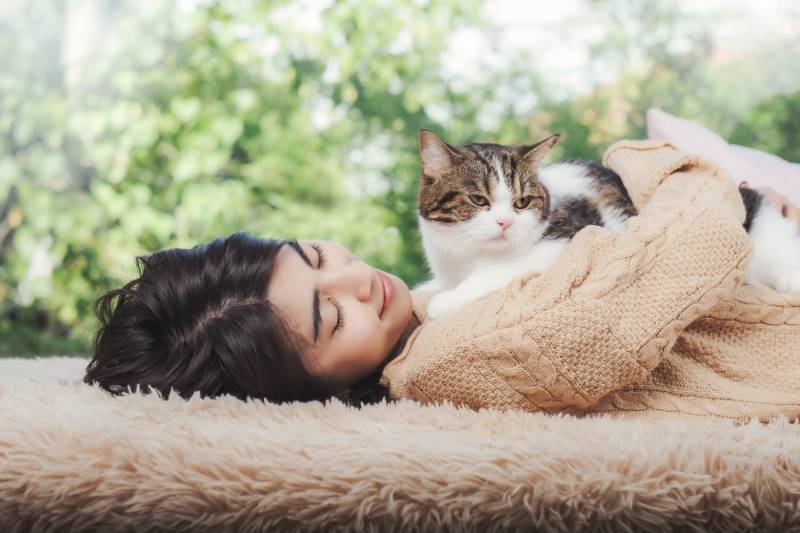

Conclusion
Most of the time, there’s nothing to worry about if your cat suddenly decides they need more cuddles. It’s most likely a sign that your cat loves, trusts, and feels comfortable around you. Cats may also become more affectionate if they sense you’re not feeling well, and some will become super needy if they’re anxious, scared, or suffering from separation anxiety.
Older cats may be slowing down and looking for some warmth, or they may be feeling painful or unwell coming to you for reassurance. As long as your cat is active, happy, and eating well, there’s probably not much to worry about. Take your cat to the veterinarian as quickly as possible if the increased clinginess is accompanied by lethargy, excessive sleeping, refusal to eat, weight loss, or other signs of illness.
Featured Image Credit: matthew halmshaw, Unsplash
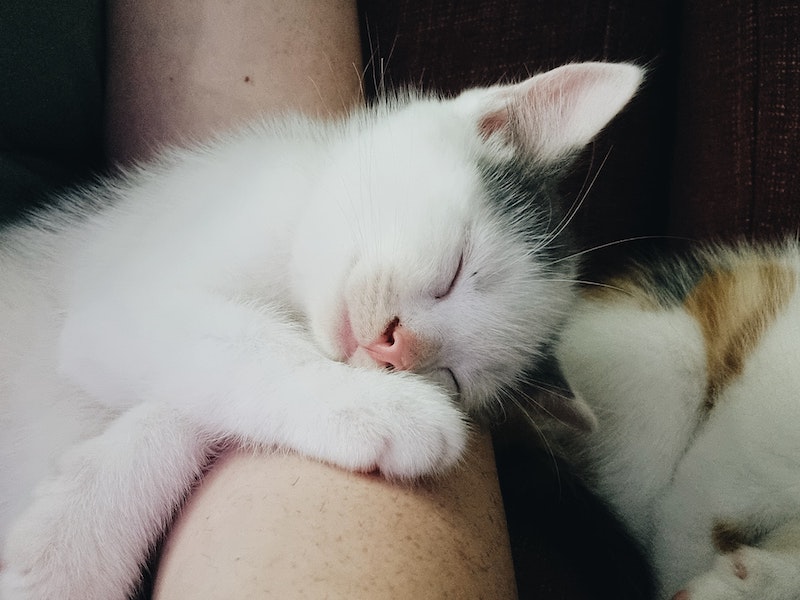






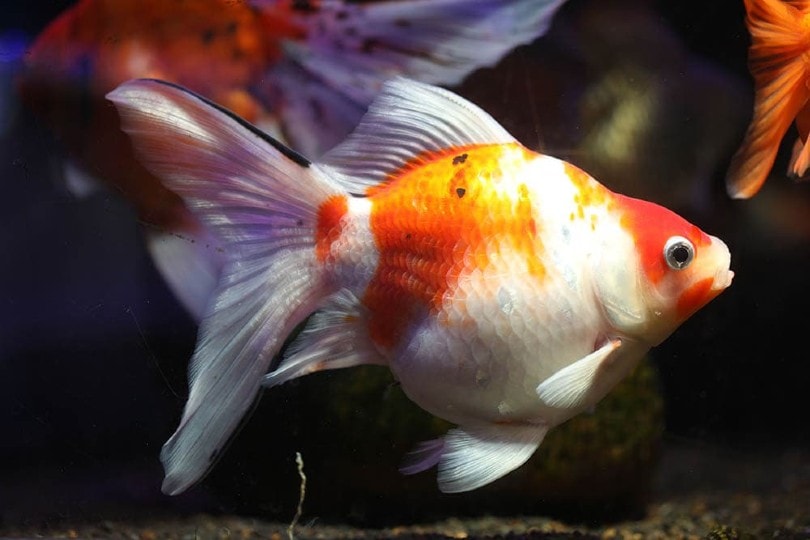
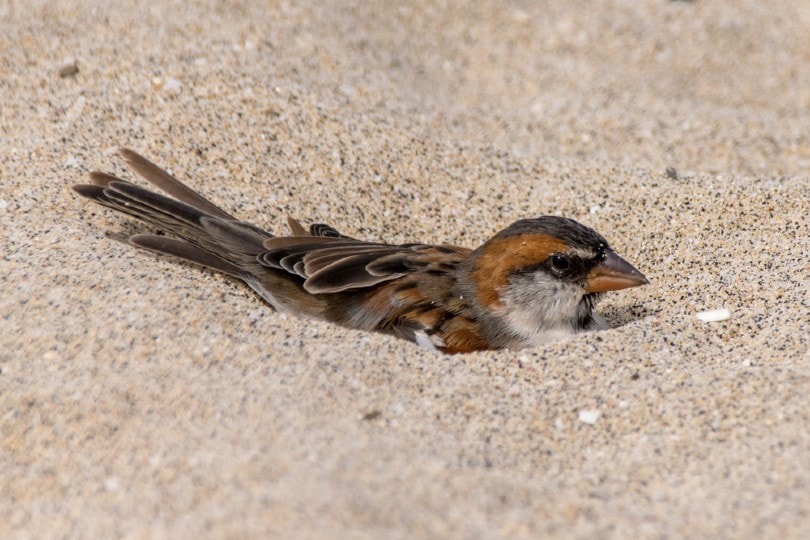
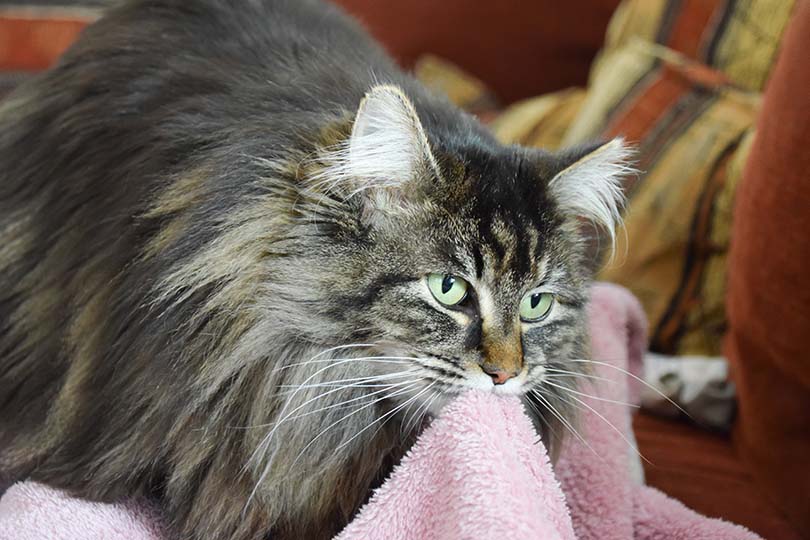



One Response
That’s right.